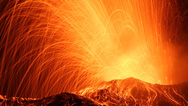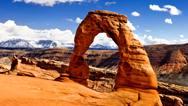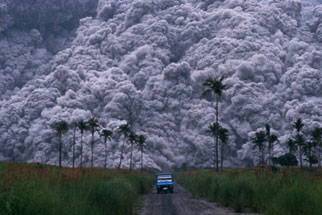A Supersized Volcano
- By Susan K. Lewis
- Posted 09.26.06
- NOVA
In 1949, when a Dutch geologist discovered massive deposits of volcanic rock around Lake Toba on the Indonesian island of Sumatra, scientists knew they were onto something big. The thousand-square-mile area, it turned out, was a giant caldera once filled with steaming volcanic ash and pumice. Toba's eruption roughly 74,000 years ago was so immense it was deemed a "supervolcano." Here, see how it dwarfs even disastrous "regular-sized" eruptions of our time.
This feature originally appeared on the site for the NOVA program Mystery of the Megavolcano.
Credits
Images
- (magma volume chart)
- © NOVA/WGBH Educational Foundation, data courtesy Geological Society of London
- (Mount St. Helens ash plume)
- Courtesy USGS
- (car fleeing Pinatubo eruption)
- © Alberto Garcia/CORBIS
- (Toba ash fallout)
- Courtesy Geological Society of London
- (Pinatubo sulfur spread)
- Courtesy NASA Langley Research Center Aerosol Research Branch
- (Lake Toba satellite view)
- Courtesy NASA
Related Links
-

Mt St Helens: Back From the Dead
Thirty years after the massive eruption, could it happen again?
-

Anatomy of a Volcano
Explore the main features of the Nyiragongo volcano, located in the Democratic Republic of Congo.
-

Deadliest Volcanoes
From Japan's Mt. Fuji to Yellowstone's buried supervolcano, how can we best prepare for the most lethal eruptions?
-

What on Earth Made This?
In this geology quiz, test your knowledge of forces that shape beautiful and bizarre natural formations on our planet.
You need the Flash Player plug-in to view this content.


